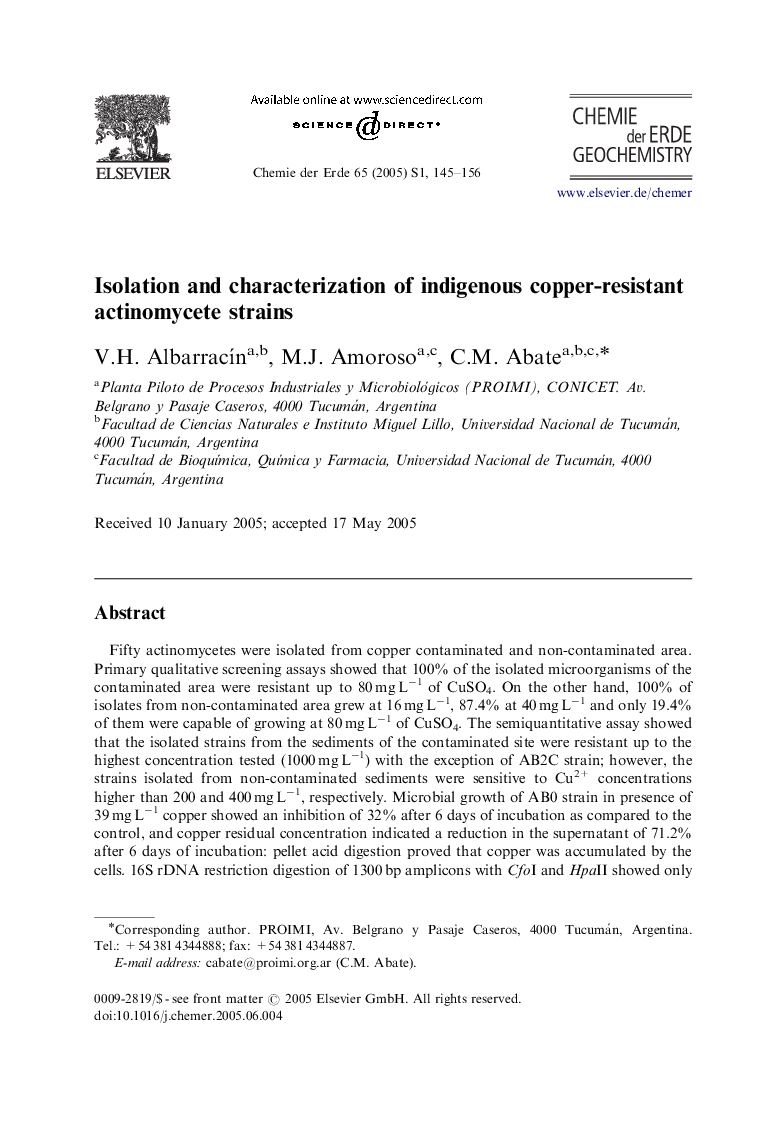| Article ID | Journal | Published Year | Pages | File Type |
|---|---|---|---|---|
| 9451172 | Chemie der Erde - Geochemistry | 2005 | 12 Pages |
Abstract
Fifty actinomycetes were isolated from copper contaminated and non-contaminated area. Primary qualitative screening assays showed that 100% of the isolated microorganisms of the contaminated area were resistant up to 80 mg Lâ1 of CuSO4. On the other hand, 100% of isolates from non-contaminated area grew at 16 mg Lâ1, 87.4% at 40 mg Lâ1 and only 19.4% of them were capable of growing at 80 mg Lâ1 of CuSO4. The semiquantitative assay showed that the isolated strains from the sediments of the contaminated site were resistant up to the highest concentration tested (1000 mg Lâ1) with the exception of AB2C strain; however, the strains isolated from non-contaminated sediments were sensitive to Cu2+ concentrations higher than 200 and 400 mg Lâ1, respectively. Microbial growth of AB0 strain in presence of 39 mg Lâ1 copper showed an inhibition of 32% after 6 days of incubation as compared to the control, and copper residual concentration indicated a reduction in the supernatant of 71.2% after 6 days of incubation: pellet acid digestion proved that copper was accumulated by the cells. 16S rDNA restriction digestion of 1300 bp amplicons with CfoI and HpaII showed only one restriction pattern for all the strains and it matched with the control, Streptomyces coelicolor.
Related Topics
Physical Sciences and Engineering
Earth and Planetary Sciences
Geochemistry and Petrology
Authors
V.H. AlbarracÃn, M.J. Amoroso, C.M. Abate,
